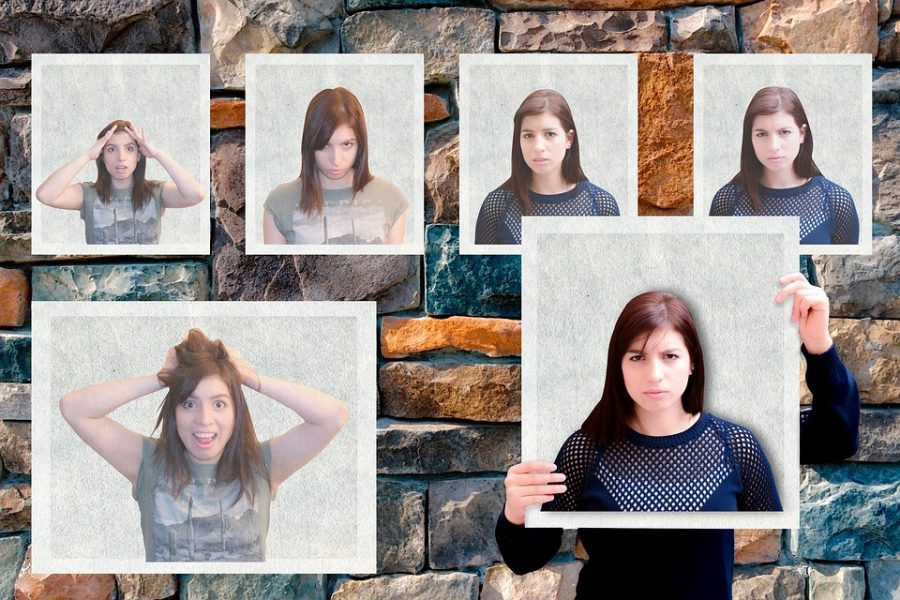Decoding body language
Her facial expression can be easily recognized, as you can tell, the one at the bottom left hand corner shows her to be excited or surprised. People are drawn towards observing others’ faces to figure out a hidden emotion, solely based on expressions made.
January 11, 2019
Body language can tell you a lot about one’s behavior and personality. The way someone stands, the spacing of one’s body, position of their hands, and eye contact are all examples of body cues. Body language is defined as subtle cues we either send or receive cues to each other nonverbally. Decoding means to analyze and interpret.
One way that you can present body language is through facial expressions. There are seven universal expressions. These seven include happiness, sadness, anger, fear, surprise, disgust, and contempt. We are able to register more than ten thousand facial expressions, but we only react to three thousand.
Another way to show body language is by using body movements, such as moving closer, eye contact, slouching over, or even where you place your hands. For example, to tell whether someone is engaged in a conversation, they would maintain eye contact, nod or agree, and have uncrossed arms. There are even common differences between the body language of males and females, one example being lying. Normally men lie to appear more powerful, successful, and interesting; they mostly lie for their own benefit or gain. However, women tend to lie less about themselves, and more to make others feel better or protect their feelings.
Cultural norms can play a role in body language. While there are some universal cues and expressions, some motions can be interpreted differently based on culture. For instance, eye contact in America and Canada usually means that one is showing attention. In the Middle East it can show trust and sincerity with one another. However, in some parts of Asia, Africa, and Central America, extended eye contact can indicate rudeness or even can be seen as a “wanting to fight” gesture.
You are more likely to read someone’s body language correctly if you know them better because over time you have picked up on their unique gestures or expressions. Sophomore Taylin Fleming said, “Actions speak louder than words. You can lie about you feel through words, but your presence tells everything.”












